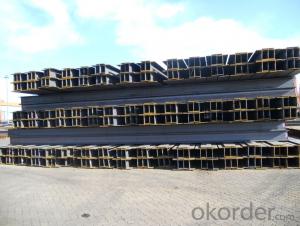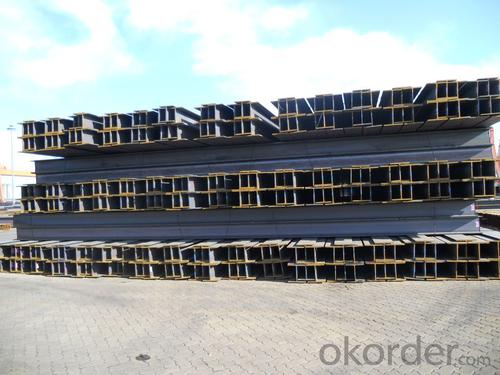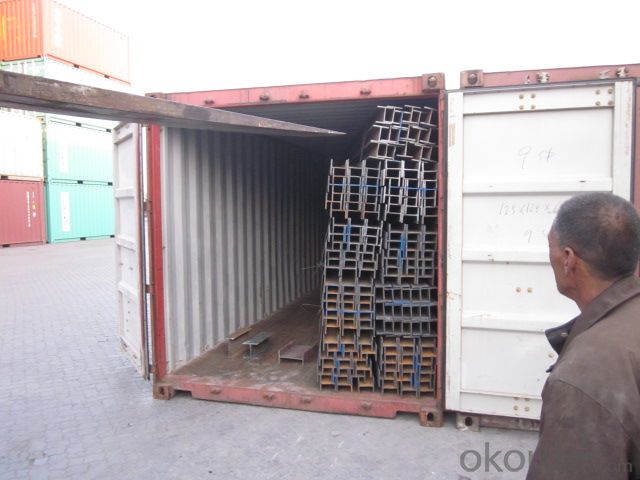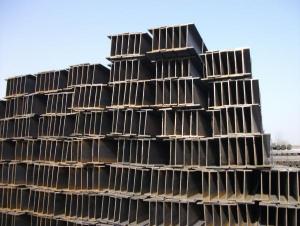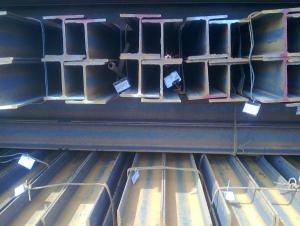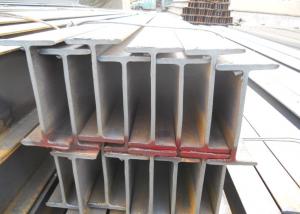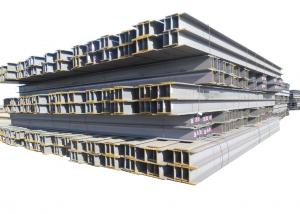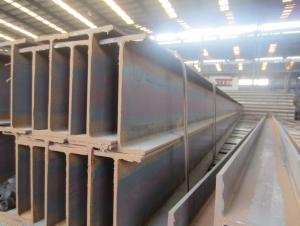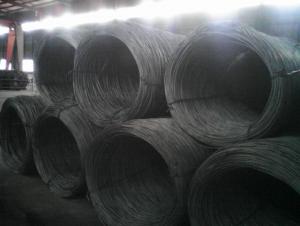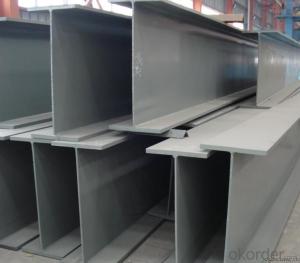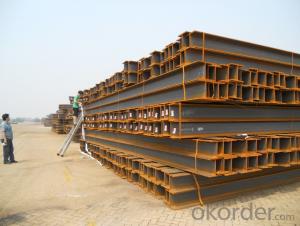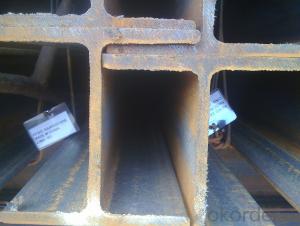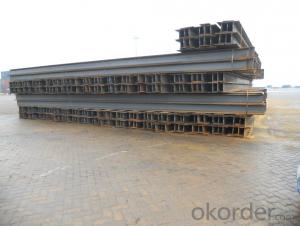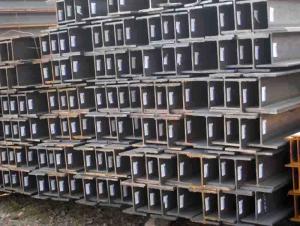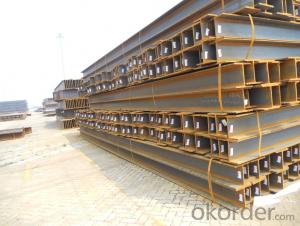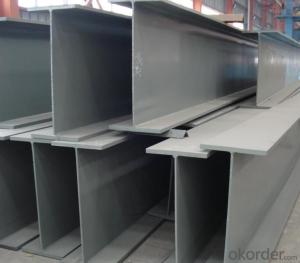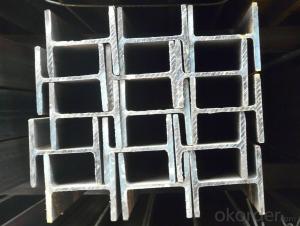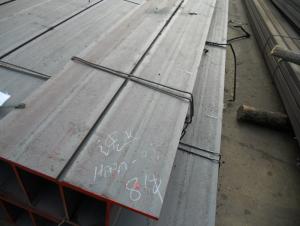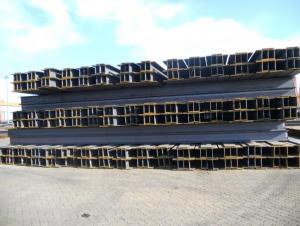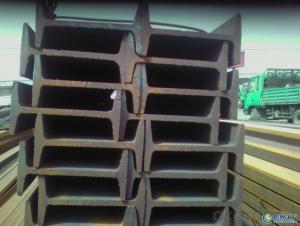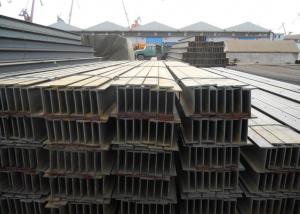Hot Rolled Steel H-Beam for Equipment Structure
- Loading Port:
- Tianjin
- Payment Terms:
- TT OR LC
- Min Order Qty:
- 10000 m.t.
- Supply Capability:
- 150000 m.t./month
OKorder Service Pledge
OKorder Financial Service
You Might Also Like
Specification
Product Description:
OKorder is offering Hot Rolled Steel H-Beam for Equipment Structure at great prices with worldwide shipping. Our supplier is a world-class manufacturer of steel, with our products utilized the world over. OKorder annually supplies products to European, North American and Asian markets. We provide quotations within 24 hours of receiving an inquiry and guarantee competitive prices.
Product Applications:
Hot Rolled Steel H-Beam for Equipment Structure are widely used in the construction of buildings and bridges, and the manufacturing, petrochemical, and transportation industries.
Product Advantages:
OKorder's Hot Rolled Steel H-Beam for Equipment Structure are durable, strong, and resist corrosion.
Main Product Features:
· Premium quality
· Prompt delivery & seaworthy packing (30 days after receiving deposit)
· Can be recycled and reused
· Mill test certification
· Competitive pricing
Product Specifications:
Specifications of Hot Rolled Steel H-Beam for Prefabrication structure
1. Standard: Q235B2.
2. Grade: Q235, SS400 or Equivalent
3. Length:as following table
4. Invoicing on theoretical weight or actual weight as customer request
5.Payment: TT or LC
6. Sizes:
SIZE(mm) | DIMENSION(kg/m) |
150*75 | 14 |
150*150 | 31.1 |
148*100 | 20.7 |
200*100 | 20.9 |
Usage & Applications of Hot Rolled Steel H-Beam for Equipment Structure
Commercial building structure ;Pre-engineered buildings; Machinery support structure; Prefabricated structure; Medium scale bridges; Ship-building structure. etc.
Packaging & Delivery
1. Packing: it is nude packed in bundles by steel wire rod
2. Bundle weight: not more than 3 MT for bulk vessel; less than 3 MT for container load
3. Marks:
Color marking: There will be color marking on both end of the bundle for the cargo delivered by bulk vessel. That makes it easily to distinguish at the destination port.
Tag mark: there will be tag mark tied up on the bundles. The information usually including supplier logo and name, product name, made in China, shipping marks and other information request by the customer.
If loading by container the marking is not needed, but we will prepare it as customer request.
4. Transportation: the goods are delivered by truck from mill to loading port, the maximum quantity can be loaded is around 40MTs by each truck. If the order quantity cannot reach the full truck loaded, the transportation cost per ton will be little higher than full load.
5. Delivered by bulk vessel or container
Production flow of Hot Rolled Steel H-Beam for Prefabrication structure
Material prepare (billet) —heat up—rough rolling—precision rolling—cooling—packing—storage and transportation
FAQ:
Q1: How do we guarantee the quality of our products?
A2: We have established an advanced quality management system which conducts strict quality tests at every step, from raw materials to the final product. At the same time, we provide extensive follow-up service assurances as required.
Images:
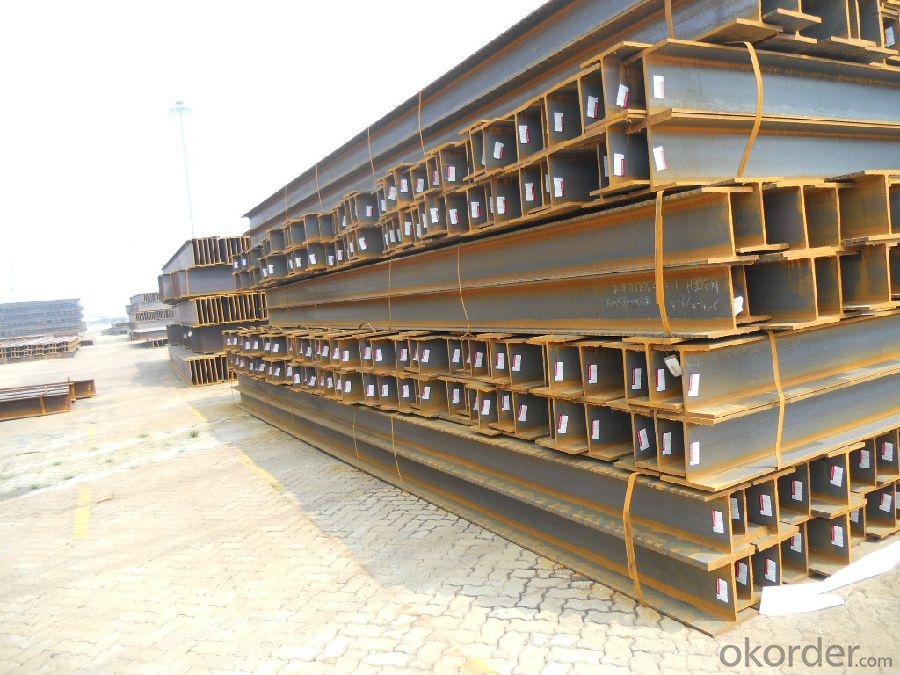
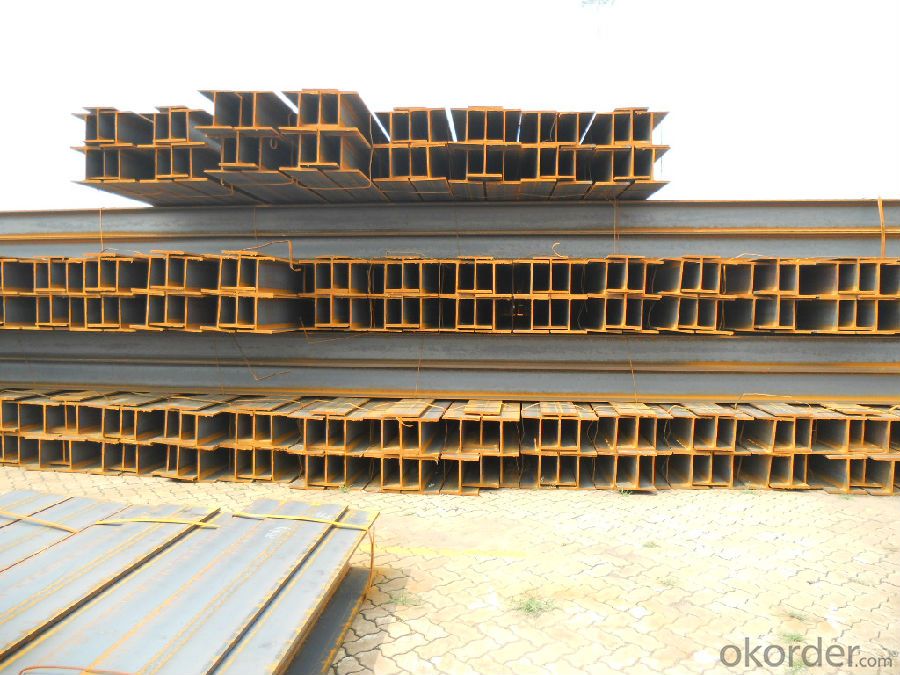
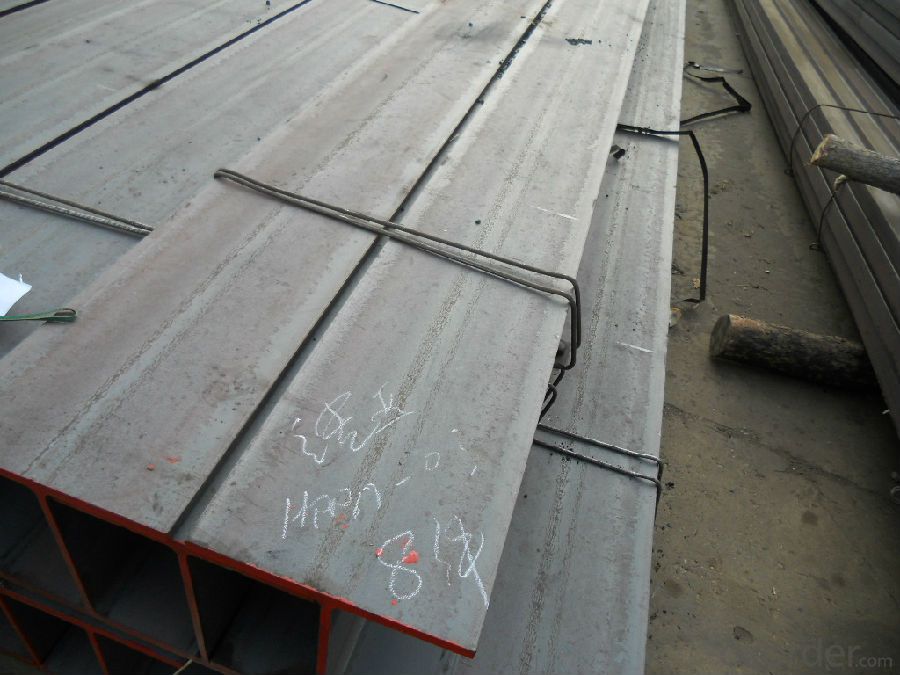
- Q: Can steel H-beams be used for theaters or auditoriums?
- Yes, steel H-beams can be used for theaters or auditoriums. Steel H-beams are commonly used in construction for their strength and load-bearing capabilities. They provide structural support and can withstand heavy loads, making them suitable for large spaces like theaters or auditoriums. Additionally, steel H-beams offer flexibility in design, allowing for open and spacious layouts that are often desired in these types of venues.
- Q: Can steel H-beams be used for cantilever structures?
- Yes, steel H-beams can be used for cantilever structures. Cantilever structures are designed to have a projecting beam or member that is supported on only one end, with the other end free or unsupported. Steel H-beams are commonly used in construction due to their strength and load-bearing capabilities. They are well-suited for cantilever designs as they provide excellent structural support, minimizing deflection and ensuring stability. However, it is essential to consider the specific requirements of the cantilever structure and consult with a structural engineer to determine the appropriate size and strength of the H-beam needed to support the desired load and span.
- Q: Can steel H-beams be used in prefabricated building systems?
- Yes, steel H-beams can be used in prefabricated building systems. They offer high strength, durability, and ease of installation, making them suitable for a variety of construction projects. Prefabricated building systems often rely on steel beams for structural support, and H-beams are a popular choice due to their load-bearing capacity and versatility.
- Q: Can steel H-beams be used for supporting agricultural structures?
- Yes, steel H-beams can be used for supporting agricultural structures. Steel H-beams are known for their strength and durability, making them suitable for various applications, including agricultural structures. Their high load-bearing capacity allows them to support heavy loads and withstand various environmental conditions. Whether it is for constructing barns, greenhouses, storage buildings, or other agricultural structures, steel H-beams provide a reliable and long-lasting support system. Additionally, steel is resistant to pests, rot, and fire, making it an ideal choice for agricultural applications where these factors are important considerations.
- Q: What are the structural integrity considerations for steel H-beams?
- When considering the structural integrity of steel H-beams, several key factors need to be taken into account. These considerations ensure that the H-beams can effectively withstand various loads and maintain their stability over time. 1. Load capacity: One of the primary concerns is the load capacity of the H-beams. The structural engineer must calculate and determine the maximum load that the beams can bear without experiencing deformation or failure. This involves analyzing the steel's yield strength, ultimate tensile strength, and the specific design of the H-beam. 2. Buckling resistance: H-beams are susceptible to buckling, which is the sudden lateral deflection or bending under compressive forces. To prevent buckling, the beams are designed with appropriate flange thickness, web depth, and spacing between the flanges. These factors contribute to the overall stiffness and rigidity of the H-beam. 3. Connection strength: The connections between H-beams and other structural components, such as columns or other beams, are crucial for maintaining the overall structural integrity. These connections must be designed to efficiently transfer loads and ensure that the H-beams do not detach or separate under various forces like tension, compression, or shear. 4. Fatigue resistance: H-beams are often subjected to cyclic loading, which can cause fatigue failure over time. To enhance their resistance to fatigue, the beams are typically designed with smooth transitions and rounded edges to reduce stress concentrations. Additionally, proper welding techniques and high-quality materials are used to minimize the risk of fatigue cracks. 5. Fire resistance: Steel H-beams can lose their strength rapidly under high temperatures. Therefore, fire protection measures, such as fireproof coatings or encasements, are often necessary to maintain the beams' structural integrity during a fire. These measures delay the temperature rise of the steel and prevent the beams from buckling or collapsing prematurely. Overall, the structural integrity considerations for steel H-beams involve analyzing their load capacity, buckling resistance, connection strength, fatigue resistance, and fire resistance. By addressing these factors, engineers can design H-beams that provide durable and reliable support in various construction applications.
- Q: What are the different types of steel H-beam profiles available?
- There are several different types of steel H-beam profiles available, each with its own unique characteristics and uses. Some of the most common types include: 1. Wide flange beams (W-beams): These beams have a wider flange and are commonly used in construction projects where strong support is required. They are known for their stability and resistance to bending. 2. American standard beams (S-beams): These beams have a narrower flange compared to wide flange beams and are often used in lighter structural applications. They are more cost-effective and easier to handle than wide flange beams. 3. Junior beams (J-beams): These beams have a lighter weight and smaller profile compared to wide flange and standard beams. They are commonly used in residential construction or smaller-scale projects. 4. European standard beams (HEB, HEM, and IPE beams): These beams follow European standards and are widely used in construction projects across Europe. HEB beams have a wide flange, while HEM beams have a wide flange and a higher moment of inertia. IPE beams have a narrower flange and are commonly used in residential buildings. 5. Japanese standard beams (JIS beams): These beams follow Japanese industrial standards and are commonly used in construction projects in Japan and other Asian countries. They are available in various sizes and profiles, including H, HP, and B series. 6. Universal beams (UB beams): These beams have a wide flange and are often used in construction projects where versatility and strength are required. They are commonly used in bridges, buildings, and other structural applications. 7. Tapered beams: These beams have a tapered flange, which allows for better weight distribution and load-bearing capacity. They are commonly used in roof trusses, bridges, and other applications where weight reduction is important. These are just a few examples of the different types of steel H-beam profiles available. The choice of profile depends on the specific requirements of the project, including load-bearing capacity, span, and cost-effectiveness. Consulting with a structural engineer or steel supplier can help determine the most suitable profile for a particular application.
- Q: What is the length of the butt joint of H steel? What is the minimum requirement?
- H type steel butt joint is not required for length, but oblique, generally 45 degrees, that is to say, not less than the length of at least H steel height.
- Q: How do steel H-beams distribute loads?
- The distribution of loads in steel H-beams is achieved through a combination of their shape and material properties. The letter "H" shape of these beams offers a favorable strength-to-weight ratio, making them efficient in carrying loads. The flanges, located at the top and bottom horizontal sections of the beam, are specifically designed to resist bending and shear forces. By distributing the load over a larger area, stress concentrations are reduced, preventing deformation or failure. The vertical web, positioned between the flanges, provides additional structural support and stability. It effectively resists compression and tension forces, ensuring that the beam does not buckle or collapse when subjected to heavy loads. Moreover, the web aids in evenly distributing the load along the entire length of the beam. The material properties of steel also play a crucial role in load distribution. Steel possesses notable strength and stiffness, allowing H-beams to withstand heavy loads without experiencing significant deflection. The properties of steel, such as its Young's modulus and yield strength, contribute to the beam's effective load distribution capabilities. In summary, steel H-beams distribute loads by utilizing their structural stability provided by their shape and the load-bearing capabilities of their material properties. This makes them a popular choice for a wide range of construction and engineering applications.
- Q: Can steel H-beams be used in the construction of cultural complexes or museums?
- Certainly, cultural complexes or museums can utilize steel H-beams for construction purposes. The widespread use of steel H-beams in various construction projects is due to their strength, durability, and versatility. These beams offer exceptional structural support, making them appropriate for the construction of large and intricate structures, such as cultural complexes or museums. To accommodate a variety of exhibits, displays, and visitor traffic, cultural complexes and museums often necessitate distinctive architectural designs and open spaces. Steel H-beams can facilitate the creation of expansive open spaces without the need for multiple supporting columns. Consequently, this allows for flexible floor plans and uninterrupted views. In cultural complexes and museums, this is particularly crucial as it permits unrestricted movement of visitors and facilitates the display of sizable artworks or artifacts. Moreover, steel H-beams are renowned for their capacity to withstand substantial loads and provide stability. This quality proves vital in cultural complexes and museums, where exhibits, artworks, and other installations can bear significant weight. Steel H-beams efficiently bear these loads, ensuring the structural integrity and safeguarding of valuable cultural assets. Additionally, steel H-beams are highly adaptable and can be seamlessly integrated into diverse architectural designs. They can be combined with materials such as glass or concrete, resulting in visually appealing and contemporary structures. Furthermore, steel H-beams offer considerable flexibility in terms of design, enabling architects to create distinctive and iconic structures that accurately reflect the cultural significance of the complex or museum. In conclusion, steel H-beams are an excellent choice for the construction of cultural complexes or museums. Their strength, durability, and versatility render them suitable for supporting large and intricate structures. Furthermore, their ability to withstand heavy loads ensures the preservation and safety of cultural assets. Additionally, their adaptability empowers architects to fashion visually captivating and iconic designs that accurately convey the cultural significance of the project.
- Q: Can steel H-beams be used in theaters and auditoriums?
- Yes, steel H-beams can be used in theaters and auditoriums. Steel H-beams are commonly used in construction due to their high strength-to-weight ratio and structural stability. In theaters and auditoriums, these beams can be used to support the roof, walls, and other structural elements, providing a robust framework for the building. Additionally, steel H-beams are versatile and can be fabricated to various lengths and shapes, allowing for customized designs that can accommodate the specific needs and requirements of the theater or auditorium. The use of steel H-beams in these spaces ensures a safe and durable structure, capable of withstanding heavy loads and providing a solid foundation for the artistic performances and activities that take place within.
Send your message to us
Hot Rolled Steel H-Beam for Equipment Structure
- Loading Port:
- Tianjin
- Payment Terms:
- TT OR LC
- Min Order Qty:
- 10000 m.t.
- Supply Capability:
- 150000 m.t./month
OKorder Service Pledge
OKorder Financial Service
Similar products
Hot products
Hot Searches
Related keywords
